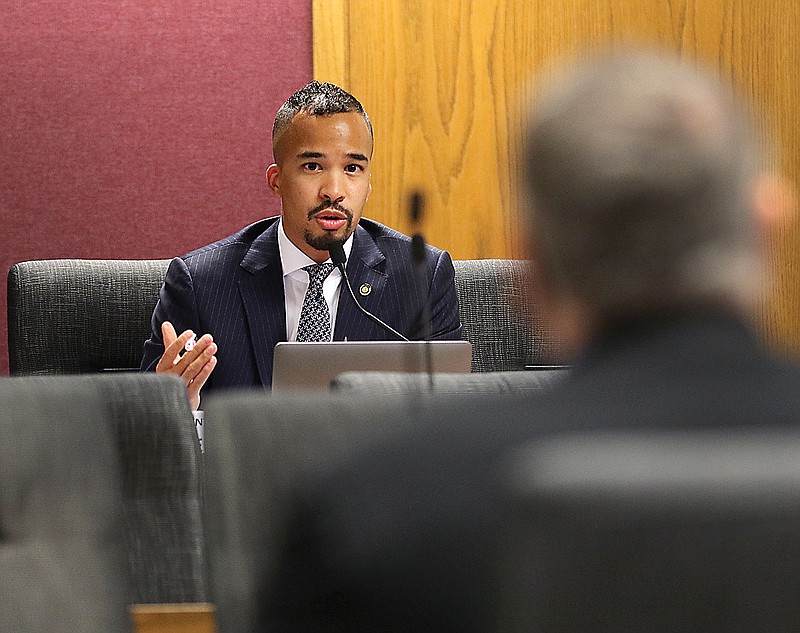There's a medical difference between what people may commonly describe as a chokehold and what a chokehold is to law enforcement, and evaluating how much that difference matters may be a key part of future reform of policing.
The May 25 death of George Floyd - a Black man who died as a white Minneapolis police officer pressed his knee against Floyd's neck for several minutes - sparked nationwide protests against police violence and racism.
State lawmakers have made calls since then for police reform, with legislation to that end having been submitted in the state House of Representatives and Senate during Gov. Mike Parson's previous special legislative session on anti-violent crime proposals that sought to empower police and prosecutors.
Parson has said police reform proposals should be reserved for the regular legislative session.
The House's Special Committee on Criminal Justice met Monday amid the second, ongoing special session this year - about a supplemental budget for remaining unspent federal pandemic aid - to discuss what such police reform proposals might look like in the spring.
There was no specific legislation before the committee, but testimony was taken on chokeholds, no-knock raids by police and sexual relations between officers and people in custody.
Committee Chairman Rep. Shamed Dogan, R-Ballwin, said the overall objective of the hearing was to "try to build some consensus on those issues," because, he said, everyone can agree there needs to be some kind of reform to increase confidence in law enforcement and to hold bad actors accountable.
The discussion of the use of chokeholds became contentious almost immediately, however.
Kevin Merritt - executive director of the Missouri Sheriffs' Association, and the association's training director - said lateral vascular neck restraints (LVNR) or shoulder pin restraints are valuable tools for law enforcement that should be considered a less than lethal use of force.
Merritt said those restraints are safe when used properly, are not particularly prone to being used improperly, don't have a medical consensus about whether they're likely to cause death or serious injury if used improperly, and work better than stun guns or pepper spray in controlling people.
He said he'd personally used both techniques without adverse effects, and no case could be found where a Missouri officer has used an LVNR or shoulder pin restraint and someone died.
Merritt made a distinction between respiratory restraints - chokeholds - that apply pressure to someone's windpipe and restrict their breathing and vascular restraints such as an LVNR or shoulder pin restraint that compress someone's jugular vein and carotid artery to slow the flow of blood to the brain and from the brain to the heart.
He said vascular restraints are often mischaracterized as chokeholds.
Though he made the medical distinction between restricting someone's air flow and blood flow, Merritt agreed to a point by Rep. Wiley Price IV, D-St. Louis, that "yes, it is possible" the end result of either set of techniques could be the same - incapacitation that could lead to serious injury or death.
Merritt agreed chokeholds - respiratory restraint techniques - should be reserved for lethal force situations, but he objected to the possibility of a state law that restricts the use of restraints because he didn't want to limit individual agencies and officers' discretion in the use of lethal force.
He also said, "I don't think that optics should drive an officer's use of force decision," in response to questioning by Rep. Tony Lovasco, R-O'Fallon, about whether the look of using an LVNR on a child, for example, might inflame public opinion and drive people who interact with police to be more fearful and potentially more violent.
Kemp Shoun - executive director of the Missouri State Troopers Association - said the proper use of an LVNR is safe, but citizens who see it used are going to be shocked, so it's up to the agencies that authorize their use to educate the public on the techniques, and there should be reviews of the uses of force.
Shoun said every agency should have policies about the reporting of the use of force, what led up to that use and what de-escalation was used beforehand.
He said he would "hate to see a tool (LVNR) thrown out of the tool box that might be usable," that saves offenders or officers from being injured, but in its use "we need to have justification for it."

